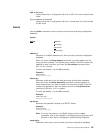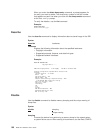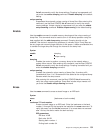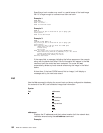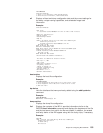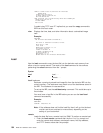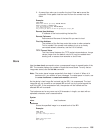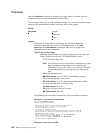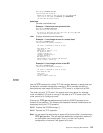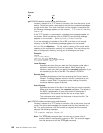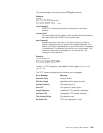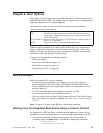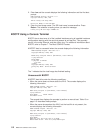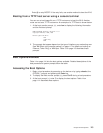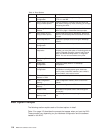Boot config> timedload activate
Time Activated Load Processing...
Remote host IP address or IBD load name [0.0.0.0] ibd:vl3.cce
Time of day to load image (YYYYMMDDHMM) []? 199703191630
The load timer has been activated.
deactivate
Cancels a scheduled load.
Example 1. Deactivate time activated load:
Boot Config> timedload deactivate
Deactivate Load Timer Processing...
Do you want to deactivate the load timer? (Yes, No, Quit) [No]? yes
The load timer has been deactivated
view Displays scheduled load information.
Example 1. Load image source is a remote host:
Boot Config> timedload view
Time Activated Load Schedule Information...
The router is scheduled to reload as follows.
Date: March 19, 1997
Time: 16:30
Remote host IP address: 1.1.1.2
Via gateway: 0.0.0.0
Timeout in seconds: 10
Filename: /tftpboot/vl3.cce
Interface address: 0
New address: 1.1.1.1
Network mask for this interface: 255.255.255.0
Config filename: ibd/vl3.cfg
Example 2. Load image source is the IBD:
Boot Config> timedload view
Time Activated Load Schedule Information...
The router is scheduled to reload as follows.
Date: March 19, 1997
Time: 16:30
Filename: vl3.cce
Config filename: ibd/vl3.cfg
TFTP
Use the TFTP command to initiate TFTP file transfers between a remote host and
the device’s nonvolatile configuration memory or IBD It provides the ability to
store/retrieve a load image file into/from a TFTP server or a router with an IBD.
The router acts as a TFTP client. The remote host is any device (for example,
router, workstation, PC) that is running IP that acts as a TFTP server node. The
router cannot be in Config-only mode.
Entering the TFTP get and put commands locks the CONFIG process for the
duration of the operation. The following two keyboard character combinations are
recognized during the TFTP operation:
Ctrl-P Displays the OPCON prompt (*).
Ctrl-C Cancels the TFTP operation.
Note: Do not press the reset button or power off the router while it is performing a
TFTP get operation. This will leave the destination configuration memory in
an inconsistent (and invalid) state. That is, you will have a partial
configuration or load and it will appear to be valid.
Chapter 8. Configuring Boot CONFIG 107



